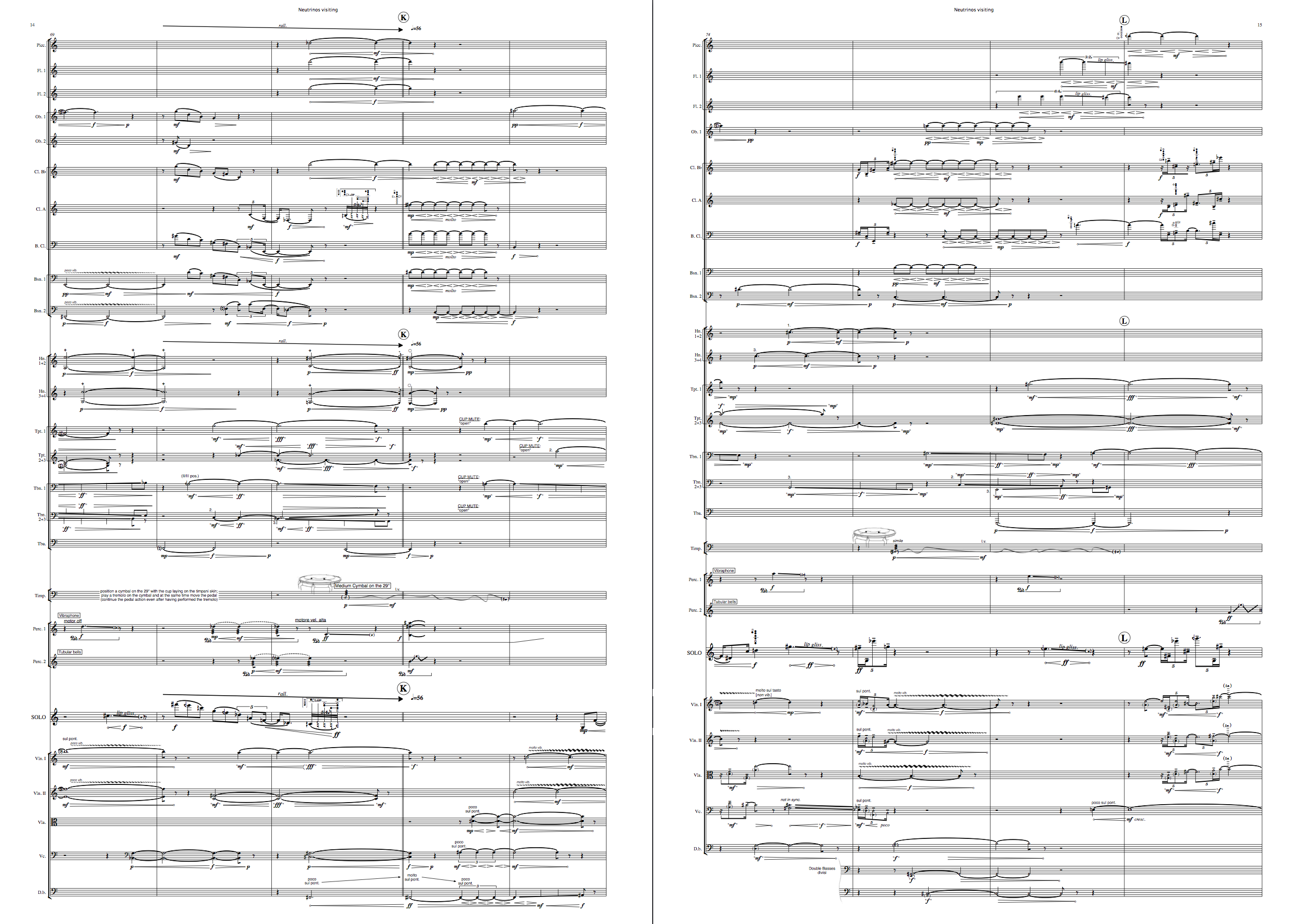A [quasi]concerto for solo clarinet and orchestra, written in 2014 and revised in 2017 with a new cadenza.
Neutrinos are some of the smallest particles that exist in the universe. Shot throughout open space by star explosions, they are so small that they can pass through the structure of atoms without decelerating. Every second, billions of neutrinos pass through our whole body. In this piece, I imagine what they witness in their endless, undisturbed journey through the fabric of the universe. Visiting Earth, I picture neutrinos travelling through the structure of matter the same way we would walk in a big hall, admiring the surrounding architecture.
The listeners are the protagonists of this piece: they become the neutrinos, promenading with their minds across five different matters. These are presented in five sections, each differing in timbre, phrasing and sound. The solo clarinet accompanies the audience on a journey through different structural densities as a fellow particle which is affected by and affects the surrounding matter.
The journey of the neutrinos starts with the matter Wood, which main sonorities, rendered by woodwinds and wooden percussions, generate harmonies and timbres characterised by short and dynamically unstable chordal blocks that are born from nothing and then die out. Passing through Metal, the orchestration is dominated by brass and metal percussions, the chords are no longer short and isolated by silence but are progressively longer and denser. They are rendered unstable by the continuous variations in intonation and the pulse of the instrumental blocks, which amplify the vibrato of the vibraphone generating the overall sharp, metallic sonority.
Water is the central part of the piece, it reflects and fragments the sounds of the other sections. The allusion to delicate, transparent and shimmering sonorities attempts to recreate the ripples on water. The illusion of an actual immersion in the liquid substance reaches its most intense moment in the cadenza. Once the water becomes electric, the piece reveals its symmetry with the two last sections corresponding to Metal and Wood respectively. Ideal showers of electrons cross the trajectory of the neutrinos, presenting sounds dominated by the timbre of the brass and long chordal blocks. These blocks become even more harmonically unstable while maintaining continuity and roughness, imitating the electric sound of the double-reeds multiphonics.
Even electromagnetic fields cannot affect the motion of the neutrinos which, once passed Earth, continue in Vacuum. There, the atmosphere resembles the light timbres and short chords found in the beginning. The result is an echo of the whole work, which travels without resistance in the open space vacuum, gradually losing itself in the distance.
This work is a journey through forms that are revealed out of the profound obscurity of silence, but that have always been there. It is a homage to my beloved instrument, the clarinet, capable of creating a palette of infinite timbres and intensity, as well as to the exciting discoveries of science.
